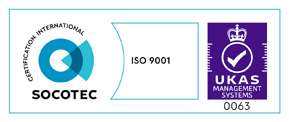
Aviation Decarbonisation: The Role of Airports
26th July 2023
No time for take-off – In our inter-connected global economy aviation plays a fundamental role and is likely to remain so for the foreseeable future. In 2021 the sector accounted for over 2% of global carbon emissions, which although small, disguises the wider warming impacts of water vapour from contrails at altitude. Research from Bain & Company found that commercial airlines are set to miss their net zero targets if demand for air travel continues to grow. The unfortunate knock-on effect? Aside from further adding to the climate crisis, many of the most reputable, sustainable airlines will be forced to raise their prices, altering air travel for customers and businesses alike.
Of course, the news isn’t all dire – experts agree that the aviation sector can cut up to 70% of emissions by 2050 primarily through the switch to sustainable fuels (SAF), with the hefty caveat of traffic levels remaining at a similar level. However, the technologies required to meet these goals must be implemented at scale in order to be effective, and in many cases, that goes beyond the airlines themselves. Airports can play an important role in helping the wider aviation sector reduce their carbon emissions.
At GEP Environmental, our team of Airport Carbon Accreditation certified experts have extensive experience of working with airports around the world helping to reduce their carbon emissions; ranging from small regional hubs to large international airports. Through our work we have gained valuable insights into the challenges of balancing carbon reduction alongside economic growth and some of the creative methods by which airports are challenging airlines to meet their targets.
Aviation Carbon Emissions Hotspots
One of the hardest areas of the decarbonisation question is driving behavioural change. Simply put, most organisations (particularly airlines) don’t want to change the way they’ve done things for years, and in some cases, some changes are (at least initially) more expensive. Airports however are uniquely placed to be a catalyst for driving significant change within the aviation sector as they can wield significant influence. Firstly, however we need to understand what are the particular aircraft-related ‘carbon hotspots’ for an airport:
- Aircraft Movements: by far the largest impact are landing take-off cycles of aircraft using the airfield (up to/below 3,000 feet). Older models of aircraft can be significant carbon emitters. As such, one of the best ways for an airline to decarbonise is to update their fleet. The most fuel-efficient aircraft in commercial circulation include the Airbus A350-900, Boeing 787-8, Boeing 737 Max, and the Airbus A321 Neo.
- Engine Testing/APU: engine testing and auxiliary power usage (APU) by third-party operators on the airfield.
- Ground Support Equipment & Vehicles: stand-alone generators, tugs, tankers and other equipment used to support aircraft when they are on the ground. Usually operated by airlines/third parties.
Carrots and Sticks: Airports as Influencers
Through working with airports, we have seen first-hand the creative methods by which airports are influencing airlines to do their part. Broadly these can be categorised under the ‘carrot’ method, where airlines are rewarded for good behaviours, or the ‘stick’ method, where airlines are penalised for bad behaviours.
- Discounted fees for newer, more energy efficient aircraft fleets: many airports have employed the ‘carrot’ method when it comes to supporting airline decarbonisation. A prime example of which is offering discounted landing fees to airlines which have newer, more energy efficient aircraft within their fleet. Typically, many low-cost airlines operate newer aircraft fleets primarily due to considerations over fuel efficiency but also latterly environmental concerns.
- High landing fees for older aircraft fleets: conversely to the point listed above, many airports are considering charging higher landing fees for aircraft that are above a certain age (and by extension are less fuel efficient). This encourages airports to remove those older planes from regular use, assisting the decarbonisation agenda.
- Noise restrictions: airports have strict noise restrictions to adhere to which are designed to help minimise the impact of noise on communities in the vicinity of the airport. By extension this limits the type and by extension the age of aircraft permitted. As mentioned above, newer aircraft are less noisy and more efficient, so it’s an excellent ‘carrot’ for airlines to invest in new technologies.
- Fixed Ground Support & Electric Mobile Equipment: to encourage airlines and third-party operators to move away from using fuel-based ground support equipment (where infrastructure allows), many airports are looking to install fixed ground source equipment that can be used on aircraft stands which is powered by electricity. Not only does this help to reduce the use of fossil fuels on stand but also if married to a renewable electricity tariff can significantly reduce emissions from reliance on grid electricity. Also, many airports are actively engaging with their third-party operators to support the transition to using electric/battery/hybrid vehicles to further reduce carbon emissions.
- The Role of Private Airports: Private airports, bolstered by the deep pockets (and environmental concerns) of their owners and clientele, are leading the charge when it comes to adopting sustainable aviation technologies. In our experience knowledge sharing between private and commercial airports has proved invaluable in developing robust and effective Net Zero Strategies. It is therefore critical for all to keep these forums open.
There are many factors at play when it comes to decarbonising aviation, and airports are a significant part of the solution. For more information about how the GEP Environmental team can support your Airport Carbon Accreditation application or for general advice on decarbonising an airport, get in touch today.
< Back to all News
Would you like a free call-back from one of our Consultants?
Simply click the button below and one of our team will be in touch
Request a call-back
